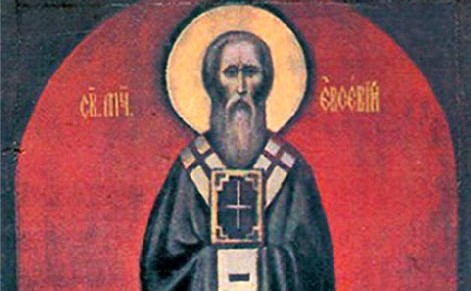Today is celebrated: Holy priest-martyr Eusebius, bishop of Samosata

He accomplished much in distorting Arianism. When the throne of Antioch became vacant, at his insistence, Meletius, a great luminary of the Church, was elected patriarch, who after his death was honored with great praise by St. John Chrysostom. But nevertheless, the Arians soon after the enthronement expelled Meletius from Antioch. When Emperor Constantine's wicked son, Constantius, died, an even worse one, Julian the Apostate, came to reign. During Julian's persecution of the Christians, Saint Eusebius took off his priestly robes and put on a military uniform, so he toured the persecuted churches in Sicily, Phoenicia and Palestine, everywhere establishing the Orthodox faith and appointing priests, deacons and all the necessary clergy, and somewhere even the bishops were appointed by him. After the rumored death of Julian, St. Eusebius advised Meletius to call the Council of Antioch in 361. Twenty-seven bishops were present, the Arian heresy was once again condemned, and the Orthodox faith was proclaimed as it was expressed at the First Ecumenical Council. In addition to Meletius and Eusebius, Saint Pelagius of Laodicea, a famous virgin and ascetic, was particularly noted at this Council. This Council was in the time of the pious emperor Jovinianus. But that king soon died, and the ferocious Valens reigned, with whom persecution once again turned towards Orthodoxy. Saint Meletius was exiled to Armenia, Eusebius to Thrace, and Pelagius to Arabia. Gratian reigned after Valens, who gave freedom to the Church and returned the bishops from exile to their places. So they returned: Meletius to Antioch, Eusebius to Samosata, and Pelagius to Laodicea. At that time, a large number of dioceses and parishes were like widows, so Eusebius was zealous to find pious pastors for the people. But when he came to the city of Dolihin with the elected bishop Marin, to enthrone the new bishop, and to distort the Arian heresy that had a great momentum in this city, a heretic-fanatic threw a tile from the roof on the honorable head of Saint Eusebius and seriously wounded him. . From this wound, the great holy zealot for Orthodoxy died in order to live forever in heavenly bliss. He suffered in 379.


